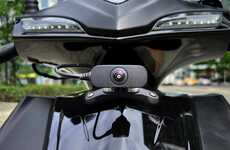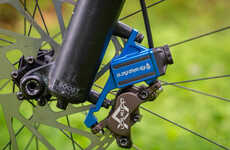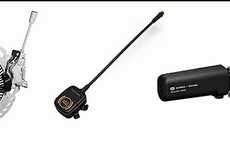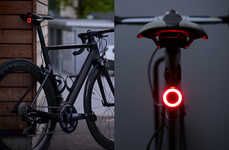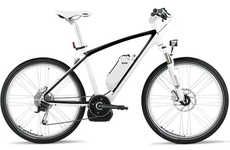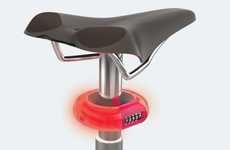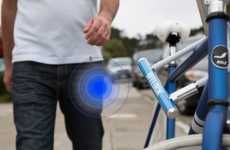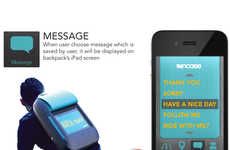
The Cruiser Bike Uses Wireless Breaks and is 99.997% Safe
Omar Yusuf — October 15, 2011 — Eco
References: sciencedaily & treehugger
A team of computer scientists and engineers at Germany's Sarlaand University have patented what they call the Cruiser Bike, a bicycle whose brakes operate entirely via wireless.
You may not trust a wireless network to sync your work, let alone stop your bicycle while barreling down a hill, but the researchers behind the Cruiser Bike ensure 99.9998% safety. The team exchanged the typical handlebar lever and brake line for a simple rubber handle and wireless router. Riders simply squeeze the rubber grip and a message is sent to the braking device to slow down; the harder you squeeze, the faster your slow down. Considering how rarely brake fluids are changed in most bicycles, this scheme may even be safer than conventional setups. The Sarlaand University researchers hope to expand the thinking behind the Cruiser Bike and apply it to modern cars, making driving even safer.
You may not trust a wireless network to sync your work, let alone stop your bicycle while barreling down a hill, but the researchers behind the Cruiser Bike ensure 99.9998% safety. The team exchanged the typical handlebar lever and brake line for a simple rubber handle and wireless router. Riders simply squeeze the rubber grip and a message is sent to the braking device to slow down; the harder you squeeze, the faster your slow down. Considering how rarely brake fluids are changed in most bicycles, this scheme may even be safer than conventional setups. The Sarlaand University researchers hope to expand the thinking behind the Cruiser Bike and apply it to modern cars, making driving even safer.
Trend Themes
1. Wireless Bicycle Brakes - The development of wireless bicycle brakes presents an opportunity for disruptive innovation in the cycling industry by improving safety and simplifying the braking process.
2. Rubber Handle Controls - The use of rubber handle controls in the Cruiser Bike opens up possibilities for disruptive innovation in the design of bicycle handlebars, enabling more intuitive and ergonomic control interfaces.
3. Wireless Vehicle Braking - Expanding the wireless braking technology to modern cars can lead to disruptive innovation in the automotive industry, enhancing safety and driver control.
Industry Implications
1. Cycling Industry - The wireless bicycle brake technology can bring disruptive innovation to the cycling industry, making cycling safer and more user-friendly.
2. Automotive Industry - Implementing wireless braking systems in cars has the potential to disrupt the automotive industry by revolutionizing vehicle braking technology and improving overall safety.
3. Consumer Electronics Industry - The integration of wireless control systems, like the rubber handle controls in the Cruiser Bike, presents opportunities for disruptive innovation in the consumer electronics industry, particularly in the design of user interfaces for various devices.
2.6
Score
Popularity
Activity
Freshness


